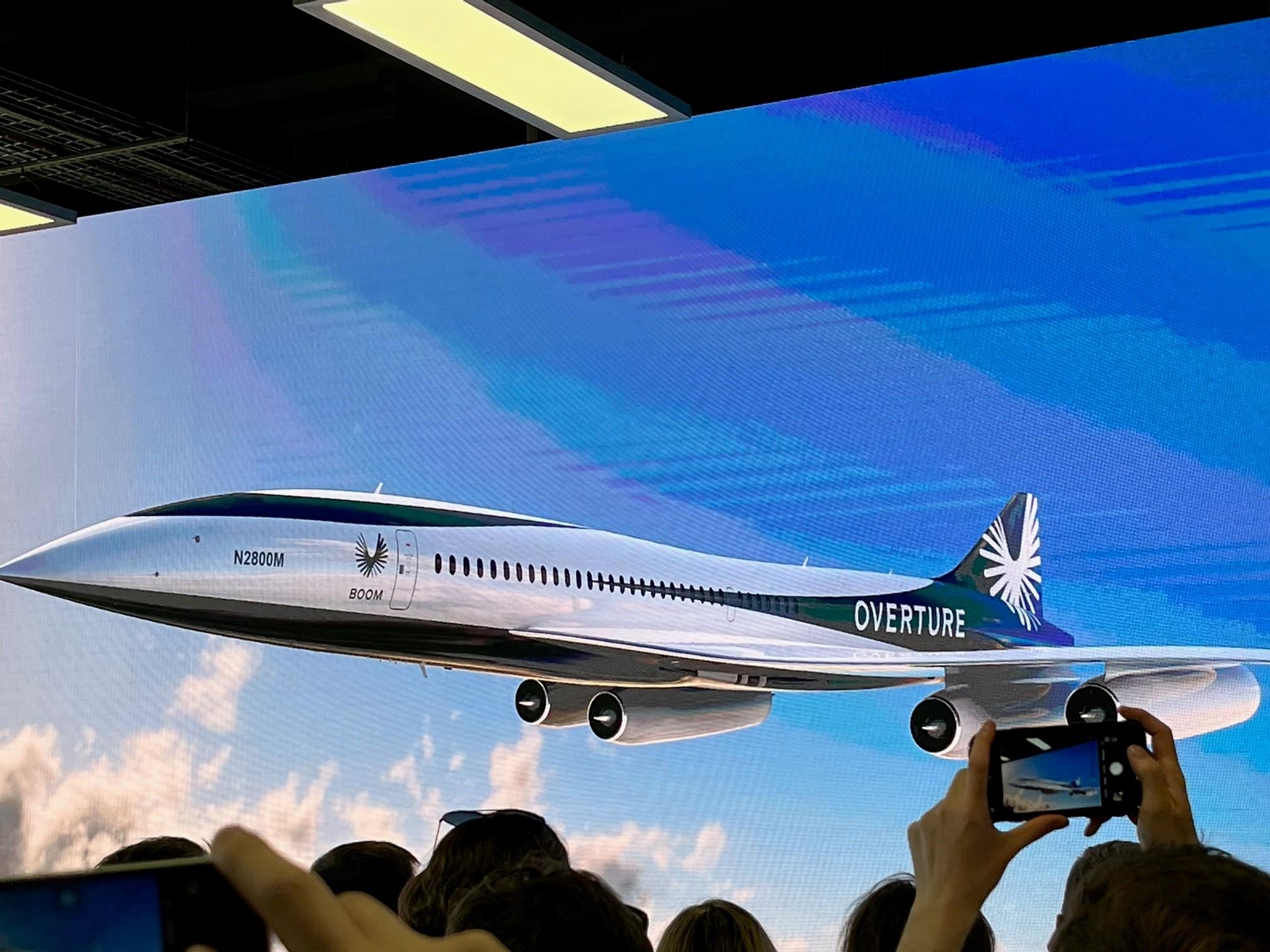
Boom Supersonic unveiled a radically redesigned version of its proposed Overture supersonic airliner at the Farnborough Airshow.
The Overture, planned to reach a cruise speed of Mach 1.7, has long had a three-engine layout. The production configuration shown at Farnborough has four underwing engines of increased bypass ratio compared to the earlier design.
An engine supplier has not yet been announced, and Boom founder and CEO Blake Scholl said the company is still studying “multiple different commercial options that are relatively straightforward to adapt for supersonic flight.”
The engine positions have also been moved slightly further aft to prevent any uncontained failures penetrating the cabin.
Other major changes to the 65- to 80-seat design include an area-ruled fuselage, with a larger diameter toward the front of the aircraft. A completely new gull wing increases the wingspan to 106 ft., with the ability to carry more slats and flaps. This, Scholl said, will give a 20% improvement in low-speed efficiency.
The changes mean that the aircraft’s overall appearance is now significantly different from previous iterations.
Under-the-skin revisions mean that the aircraft will be the first to have software that automatically optimizes takeoff thrust, flaps, slats and rate of climb, Scholl added.
“It’s not that something was wrong with the original Overture, but we’ve learned so much that we saw real opportunities to improve the configuration,” he said.
Production is planned to begin in early 2024 with first flight in 2026, followed by four years of testing, with the intention of carrying fare-paying passengers by the end of the decade.
Scholl also announced that Northrop Grumman is coming on board the program to look at using the aircraft for military purposes—it was suggested these could include rapid troop and cargo movement, VIP transport and moving critical supplies.
Other developments announced by Scholl included three new suppliers: Collins Aerospace (ice data and ice protection system), Eaton (fuel and fuel inerting system) and Safran (landing gear).
The engines will be capable of using 100% sustainable aviation fuel.
